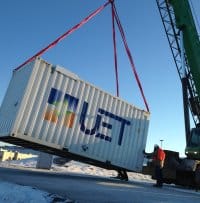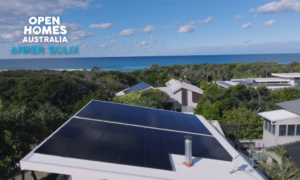US power company Avista has taken delivery of its first energy storage units to be used in researching integrating renewables into the mains grid and improving power system reliability.
The project has been made possible through a USD $3.2 million grant from Washington Governor Jay Inslee and the Washington State Department of Commerce.
The units have been installed at Schweitzer Engineering Laboratories, Inc. in Pullman, Washington.
“Power from battery storage is available almost instantaneously – within 50 milliseconds, versus 10 to 15 minutes it takes to fire up a natural gas combustion turbine,” says part of a statement from Avista last year when the grant was originally announced. ” This rapid response-time provides the flexibility required to quickly react to a sudden drop in power supply or increase in demand.”
According to UniEnergy Technologies, suppliers of the vanadium flow battery storage system, each Uni.System delivers 600kW power and 2.2MWh maximum energy in five 6 metre containers.
” Designed to be modular, multiple Uni.Systems can be deployed and operated with a density of more than 20MW per acre, and 40MW per acre if the containers are double-stacked,” says UniEnergy Technologies.

Avista’s service territory covers more than 77,000 square kilometres in eastern Washington, northern Idaho and parts of southern and eastern Oregon, supplying a population of 1.5 million.
Its renewables capacity is primarily hydroelectric, of which it has 1,022 MW in place. Avista also offers its customers a wind power option via the Buck-A-Block voluntary program. By 2011, participants were purchasing more than 75 million KWH hours of emission-free wind energy annually. Avista says it makes no profit from the premium, which goes purchasing environmental offsets from renewable energy generation.
A utility scale energy storage project elsewhere in the USA also currently making headlines is a USD $68 million initiative in Imperial Irrigation District. The 20-megawatt battery should come online by the end of 2016 and will enable 50 megawatts of new solar power onto the grid.
The Imperial Irrigation District project was spurred by an incident in 2011 when millions of customers in the Southwest were left without power on a scorching day.














































